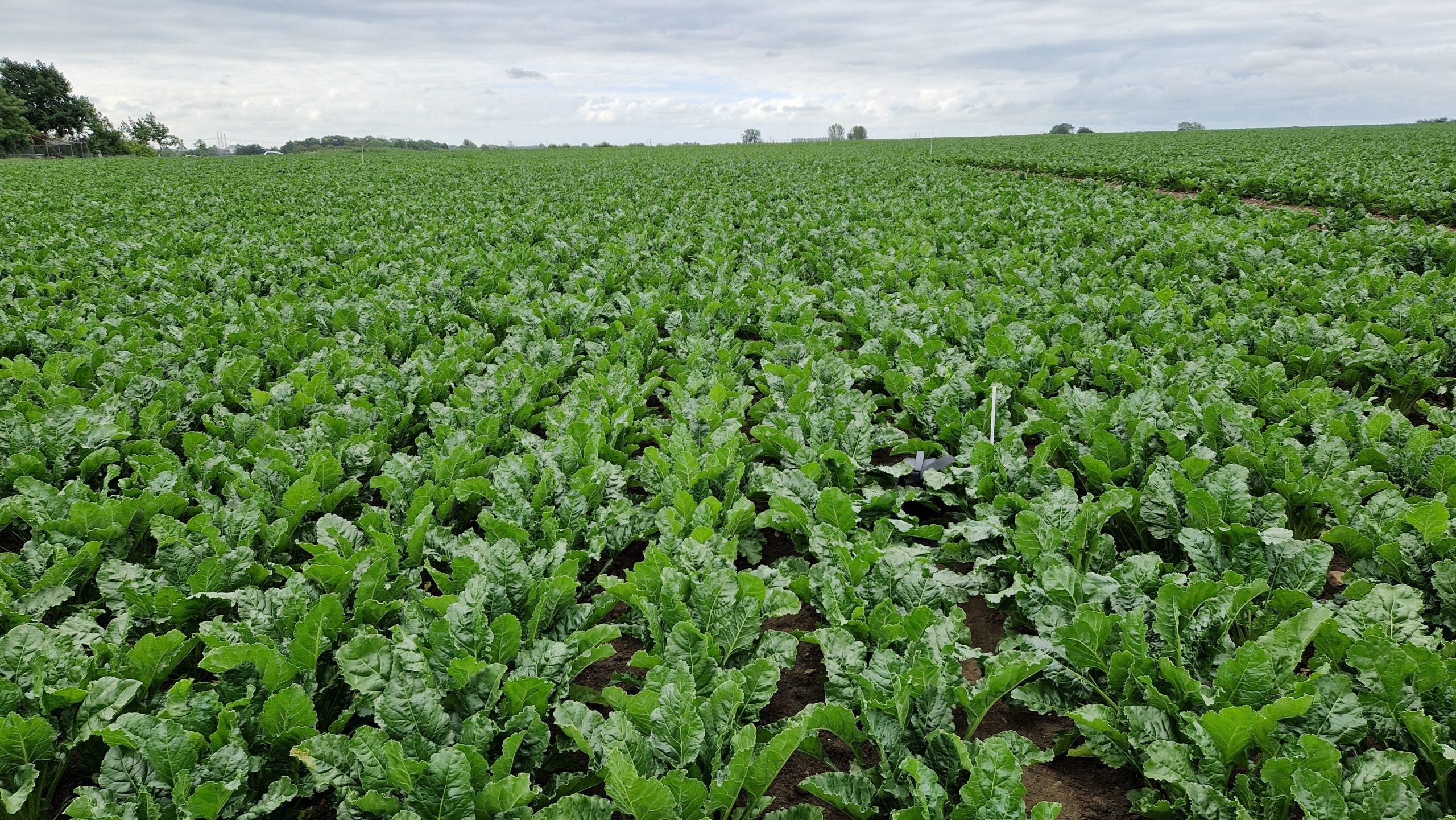ÄDELHOLM 2024: DEVELOPMENT

3 July 2024. Sow +76 days.
A lot has been happening…
CROP DEVELOPMENT AND CONDITIONS
The crop is looking good (see page feature image). It varies over the field, but I’d say there is around 80% canopy coverage and some of the roots are starting to reach 300-400g weight. There are still a lot of carrots in the field too, but they’ll develop with time.
Currently, the field is nice and wet. We did have some hot days last week (ca 30 deg C, during week 26, around 26 and 27 June), and the plants were wilting under these conditions. We got some good rain over the weekend, so if it was 30 degrees tomorrow, I don’t think we’d see the same impact. Overall, the weather has been variable: some periods of dry and warm (most of May / early June), and now wet and cold.
Triplets
The triplets plant (the one with the three cotyledons) did seem to continue to develop with three leaves at a time. The uncertainty comes from animal (hare) damage to this plant. The stones marking the triplet probably invited a hare to rest there for a minute, during which time the leaves were eaten…
WEEDS
Yeah, the Conviso-one / Smart / ALS system is impressive. Two passes, very little thinking about it, very clean. Chemical agriculture again making it hard for alternative approaches…
The biggest issue in the field is in the FarmDroid area. There is a bit of fat-hen, but the biggest issue is black bind weed (åkerbinder, Fallopia convolvulus). It is in patches, and the plants that are large are those that either grew right next to a beet, or in the place a beet should have been.
INSECTS
Ädelholm has had a similar pattern to the general trend: early outbreak of beet miner (betfluga, Pegomya betae), some black bean aphid (betbladlus, Aphis fabae), some other small problems. Nothing has been major.
There was a large population of tortoise beetle (cassida nebulosa – eggs in photo to left below) and some Nobel tortoise beetle (cassida nobilis – adult in 2nd photo from left below), but that seems to have disappeared. Right now, the biggest issue is the black bean aphids at the edge of field – the first 6 to 12 rows near the grassed edges (2 photos to right below). They’re doing quite a lot of damage, but it’s a small area and there are a lot of beneficials there, so we won’t be spraying.




There is also some stink-bugs (stinkfly, lygus) in the area at the edge of the field along the grassed boundaries. This is seen in the yellowing of some mature leaves (see below. It’s worse in real-life. Promise). Nothing much to be done about this: small area, little impact.


OTHER PESTS
Hares. Lots of the buggers. They’ve chewed plants all over the field, including in trials…
VISITORS
But, the biggest impact to the yield this year will most likely be all the visitors we’ve had to Ädelholm. This includes our summer meeting with some 200 growers, Nordic Sugar Finland’s Agri team, the minister for agriculture, and the Agricultural Science students from SLU Ultuna.


BOLTERS
The count has begun. As of 3 July, 27 bolters (no wild beets) have been pulled up. At 8.4ha, a (conservative guess of the) total of 750 000 plants, that gives around 3.2 / ha or 0.0036% of the population are bolters. I’ll take that.